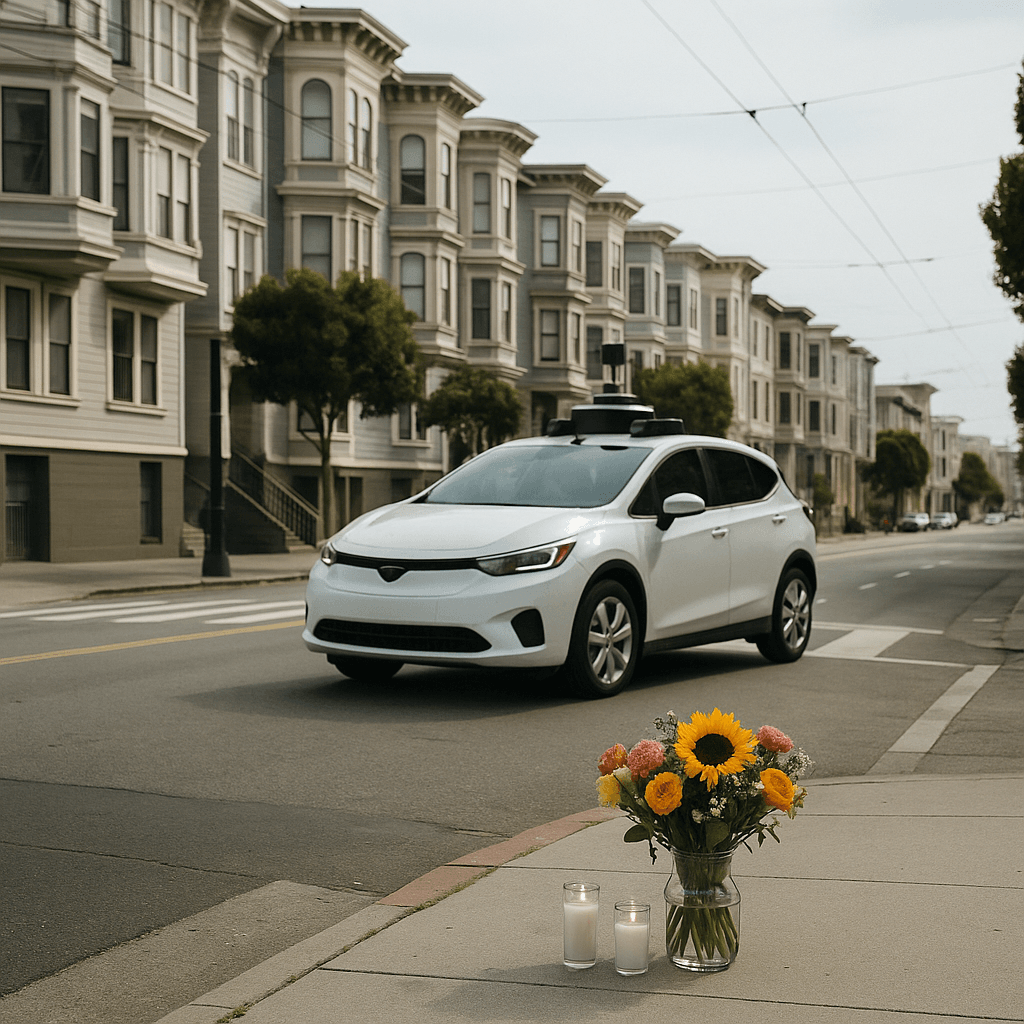The death of Kit Kat, a beloved bodega cat in San Francisco's Mission District, has transformed from neighborhood tragedy into a flashpoint for autonomous vehicle accountability. After a Waymo robotaxi struck and killed the cat on October 27, residents erected a memorial shrine and launched competing narratives about robotaxi safety that now threaten local regulatory approval.
A simple tragedy has become Waymo's latest public relations nightmare. Kit Kat, the Mission District's beloved bodega cat, didn't just die when a Waymo robotaxi struck him on October 27 - he became a symbol of everything residents fear about autonomous vehicles rolling through their neighborhoods unchecked.
The aftermath tells the real story. Within days, locals had built a shrine to Kit Kat that's become ground zero for competing narratives about robotaxi safety. Some signs blast Waymo for the incident, while others point out the thousands of animals killed annually by human drivers. It's democracy in action, messy and emotional, exactly what tech companies hoped to avoid.
Supervisor Jackie Fielder seized the moment, invoking Kit Kat's name while pushing a city resolution that would let neighborhoods vote on whether to allow driverless cars. "A human driver can be held accountable, can hop out, say sorry, can be tracked down by police if it's a hit-and-run," Fielder told The New York Times. "Here, there is no one to hold accountable."
That accountability gap hits different when it's your neighborhood cat. Waymo described the incident as one where Kit Kat "darted under our vehicle as it was pulling away," sending "our deepest sympathies to the cat's owner and the community." The clinical language contrasts sharply with the raw emotion at the memorial site.
The timing couldn't be worse for Waymo, which has been aggressively expanding its San Francisco operations after securing regulatory approval for commercial service. Co-CEO Dmitri Dolgov recently spoke at TechCrunch Disrupt about safety being paramount, emphasizing how the company's technology prevents accidents that human drivers cause daily.
But Kit Kat's death exposes a fundamental challenge for autonomous vehicle companies - how do you handle the human side of accidents when there's no human behind the wheel? Each incident, no matter how minor statistically, becomes magnified when there's no driver to face consequences or offer immediate comfort to victims.












